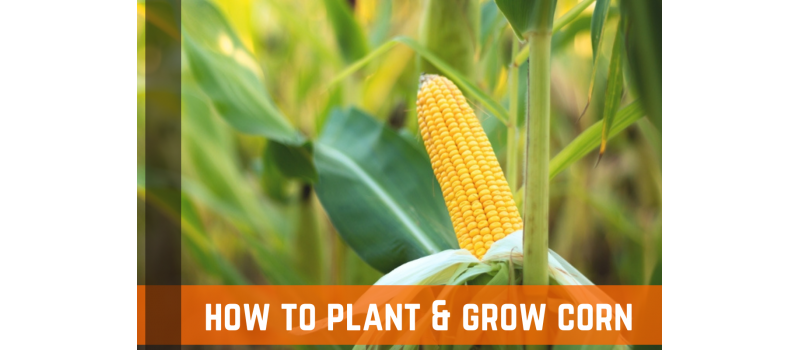Corn has been grown in North American gardens for more than 4,000 years. Because of the unrivaled sweetness of freshly plucked ears of corn, many gardeners are willing to sacrifice some garden area for them.
When you pick open-pollinated sweet corn varieties, the sugar in the kernels begins to transform into starch almost immediately. Plant breeders, however, have created a variety of fresh, sweeter cultivars that hold onto their sugar content for days.
Choose varieties classified as super sweet if sweetness is your primary concern, but keep in mind that these may not be as vigorous as other forms of sweet corn. Choose standard variety if you enjoy the classic corn flavor. Choose sugar-enhanced cultivars for a balance between sweetness and strength.
Try planting a synergistic variety if you enjoy experimenting with the newest varieties. These cultivars result in ears with a mix of super sweet and sugary-enhanced kernels on each ear. Our tips on how to grow corn will have you harvesting your own corn in no time!

Varieties Of Corn
Based on their genetics and sugar content, hybrid corn varieties are categorized into four primary groups: sugary (su), sugar-enhanced (se), shrunken (sh, sh2), and synergistic (sy).
These classifications are typically listed right on the seed packet and are used specifically to describe how sweet a variety is. It's critical to know what kind of corn you're producing because of how easy the different varieties can cross-pollinate, in addition to its sugar content. The ears that are generated may be of inferior quality if the wrong types cross-pollinate.
Sugary (su) sweet corn is the classic sweet corn. Sugary cultivars are resilient to adversity and develop quickly. The kernels are described as having a "traditional" flavor and without being overly sweet. However, once the ears of sugary sweet corn are harvested, the sugars immediately convert to starch and must be consumed right away. Avoid planting near synergistic or shrinking species.
Sugar-enhanced (se) sweet corn is sweeter than other types. Compared to other types, they maintain their sweetness for a few days after harvest. They have few problems and develop healthily. Avoid planting near shrinking species.
Shrunken (sh, sh2) sweet corn, also called “super sweet", are the sweetest varieties, containing two to three times more sugar than other varieties. The sugar in their kernels lasts up to a week longer after harvest than it does in the other varieties, but their kernels tend to be crunchier and have a less "corny" flavor. In general, shrunken kinds are more picky. Planting them close to other varieties will result in tough, starchy hybrid kernels.
Synergistic (sy) sweet corn crosses one of the other two types with sugar-enhanced to produce cultivars that offer the best of both worlds. Some synergistic cultivars can keep for long to a week after harvest, and they often have exceptionally sweet, soft kernels with a good taste.

Growing Conditions For Corn
Light & Temperature
Corn is a warm-season crop that thrives in hot, sunny weather. It is sensitive to frost and cold temperatures, so it is typically planted after the last frost of the year. In terms of light, corn needs about eight hours of sunlight per day to grow properly.
This can be a challenge in cloudy or shady areas. In terms of temperature, corn prefers temperatures between 70 and 85 degrees Fahrenheit. However, it can tolerate cooler temperatures as long as there is enough sunlight.
Too much heat can also be damaging, causing the kernels to fill out prematurely. As a result, corn growers need to pay close attention to both temperature and light levels to ensure that their crop grows properly.
Soil
Corn has some specific soil requirements. The soil should be deep, loose, and well-drained. It should also be high in organic matter, as this helps to improve moisture retention and provide nutrients for the plants.
In addition, the soil should have a neutral pH, as corn is sensitive to both acidic and alkaline conditions. If the soil does not meet these requirements, it is important to take steps to amend it before planting. With the right care, corn will thrive in a wide variety of soil types.
Water
Corn requires a large amount of water to grow and produce a high yield. In general, corn needs about 1-2 inches of water per week during the growing season. However, during periods of drought or unusually hot weather, corn may need even more water to stay healthy.
Farmers typically water corn using irrigation systems, such as drip irrigation or sprinklers. These systems help to ensure that the corn plants receive the right amount of water, even during periods of dry weather. By using irrigation, farmers can help to maximize the yield of their corn crop.
Nutrients & Fertilizer
In order to produce a healthy corn crop, farmers need to provide the plants with adequate nutrients and fertilizer. Nitrogen, phosphorus, and potassium are essential nutrients for corn plants, and they can be applied in the form of either inorganic fertilizers or organic manure. Corn also needs other nutrients, such as calcium and magnesium, but these are typically found in sufficient quantities in most soils.
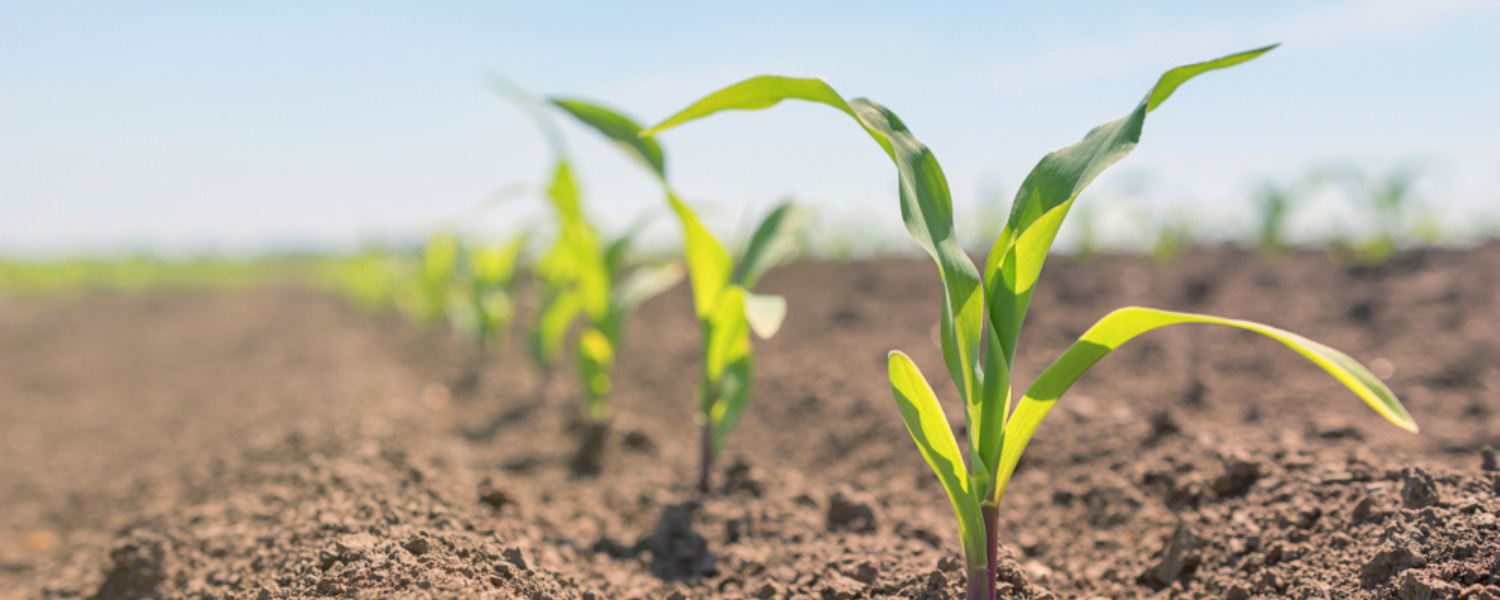
How Long Does Corn Take To Grow?
Corn is a fast-growing plant that can reach maturity in as little as 60 days. However, the vast majority of commercial varieties take between 80 and 110 days to mature.
The exact amount of time it takes for a particular variety of corn to reach maturity will depend on factors such as the climate, the soil type, and the amount of rainfall. In general, though, most types of corn will be ready to harvest within three to four months from the time they are planted.
How To Plant & Grow Corn
Corn is a staple of many diets around the world, and it is relatively easy to grow your own. The first step is to choose a sunny spot in your garden with well-drained soil. Follow these steps to grow your own corn:
- Choose a sunny location. Corn needs full sun to grow well, so choose a spot in your garden that gets at least 6 hours of sunlight each day.
- Prepare the soil. Before planting, loosen the soil in your chosen location to a depth of about 8 inches. You can do this with a shovel or a tiller.
- Plant the seeds. Plant the corn seeds about 1 inch deep and 4 inches apart in rows that are 24 inches apart. Once the seeds have been planted, water them well.
- Thin the plants. Once the corn plants have emerged and are about 6 inches tall, thin them so that there is only one plant every 12 inches. This will give the plants room to grow and produce more corn.
- Fertilize the plants. Apply a fertilizer when the plants are about 12 inches tall and again when they are about 18 inches tall. Use a fertilizer that is high in nitrogen, such as compost or manure tea.
Keep the plants watered throughout the growing season. When the corn cobs are fully mature, harvest them by cutting them off of the stalk with a sharp knife. Store the cobs in a cool, dry place until you are ready to eat them or use them in recipes such as cornbread.
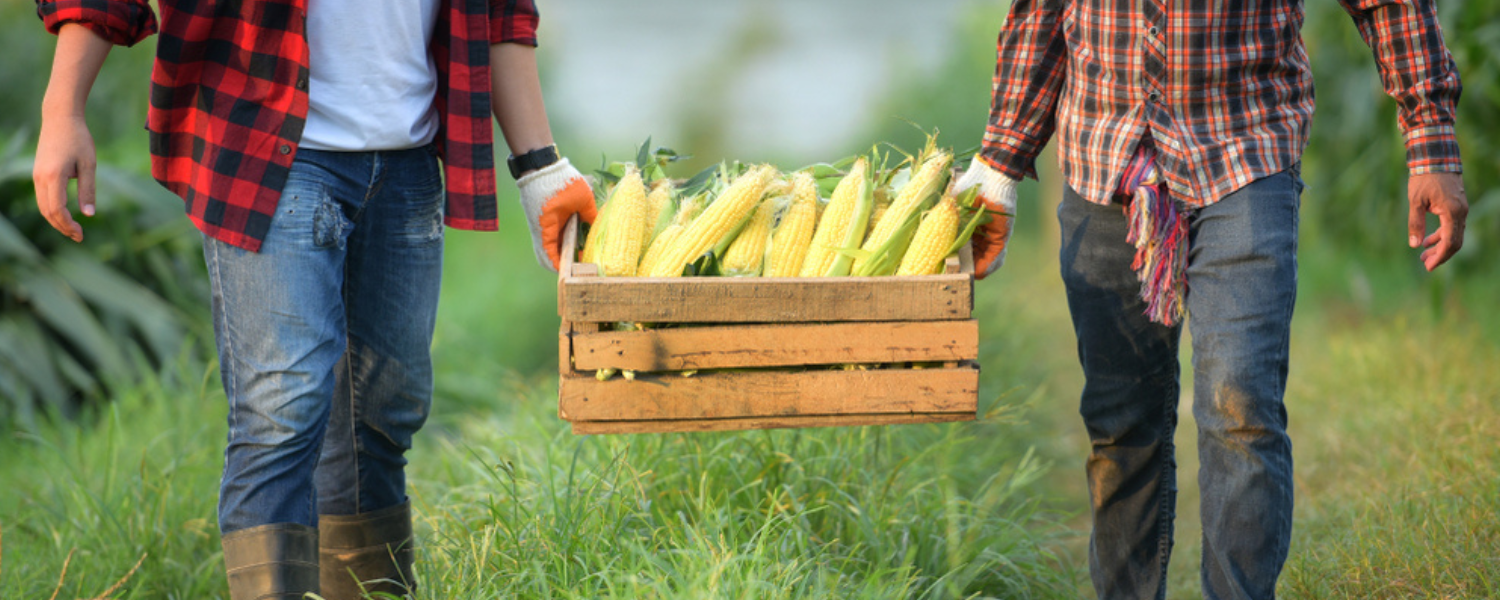
Harvesting & Storing Corn
Harvesting
Corn can be harvested roughly three weeks after the feathery tassels grow out of the peaks of the plants in the field. If you want your harvest to last longer, you should stagger the times that you plant in various areas of the garden.
If the kernels of your corn are filled with a milky juice and the silky part of the ear has turned a light brown color, then your corn is at the perfect stage of ripeness and ready to be harvested.
The first thing in the morning or later in the evening, when it's cooler, is the best time to begin harvesting corn. To harvest corn, hold the stalk just below the ear and twist the ear of corn by its tip until it separates from the stalk. Either prepare your corn when it is at its peak of freshness or place it in the refrigerator to keep until you are ready to eat it.
Storage
The best way to store corn is to keep it in a cool, dark place. A refrigerator or pantry is ideal. The corn should be placed in a container with a lid that fits snugly, such as a zip-top bag or an airtight plastic container. If the corn is not going to be used within a week, it can also be frozen.
To freeze corn, simply blanch it in boiling water for three minutes, then cool it quickly in ice water. Once it is cooled, dry the corn well and then place it in a freezer bag. Frozen corn will keep for up to six months. By following these simple storage tips, you can enjoy fresh corn all year long.
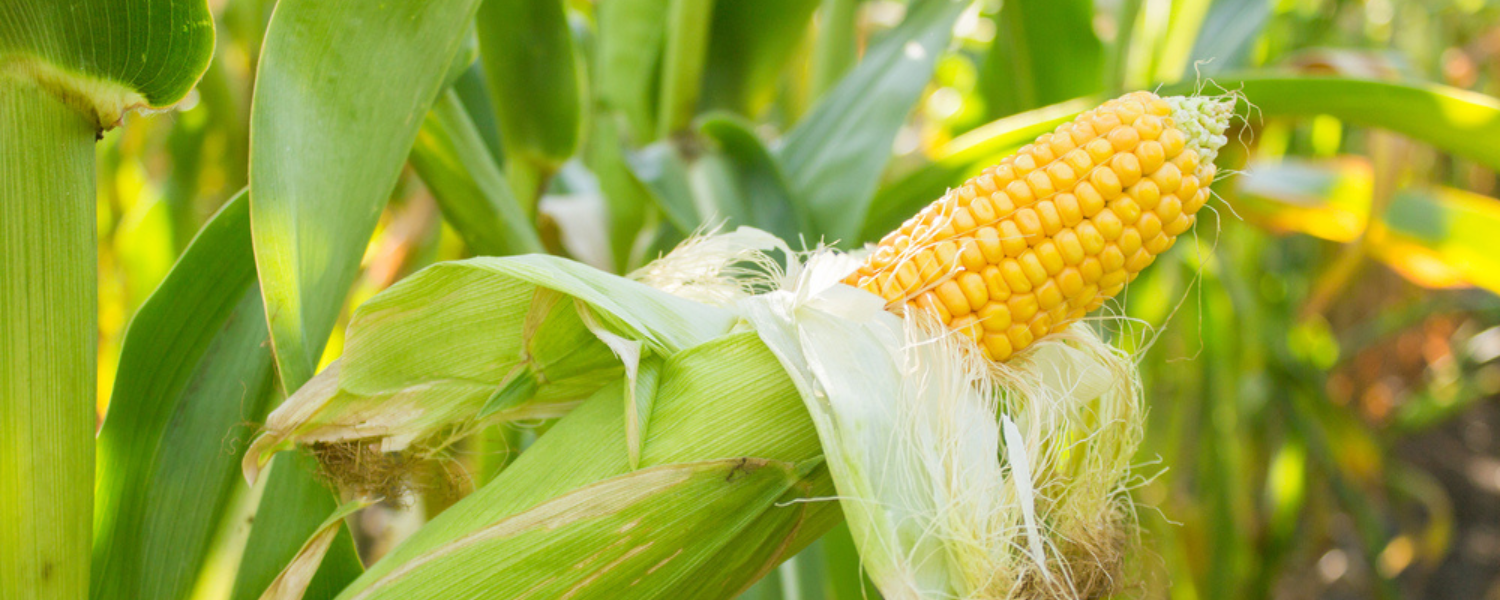
Common Corn Pests & Diseases
Pests
Any farmer will tell you that pests can be a major problem when it comes to growing crops. One of the most devastating pests is the corn rootworm, which attacks the roots of the plant, causing it to wilt and die.
The adult rootworm is a small beetle that lays its eggs in the soil near the base of the plant. When the eggs hatch, the larva tunnel into the roots, where they feed on the plant for several weeks before emerging as adults.
The rootworm is difficult to control because it can quickly develop resistance to pesticides. As a result, farmers must be constantly vigilant for signs of an infestation and take immediate action to prevent crop loss.
Plant Disease
Plant diseases can have a devastating impact on crops, leading to losses in yield and quality. Corn is particularly vulnerable to disease, and growers must be vigilant in order to protect their plants. One of the most common corn plant diseases is known as Stewart's wilt.
This disease is caused by a bacterium that invades the plant through its leaves. Once inside the plant, the bacterium multiplies rapidly, causing the leaves to wilt and turn brown. Stewart's wilt can quickly spread through a field of corn, causing extensive damage.
Fortunately, there are several steps that growers can take to prevent this disease, including planting resistant varieties of corn and using proper irrigation techniques.
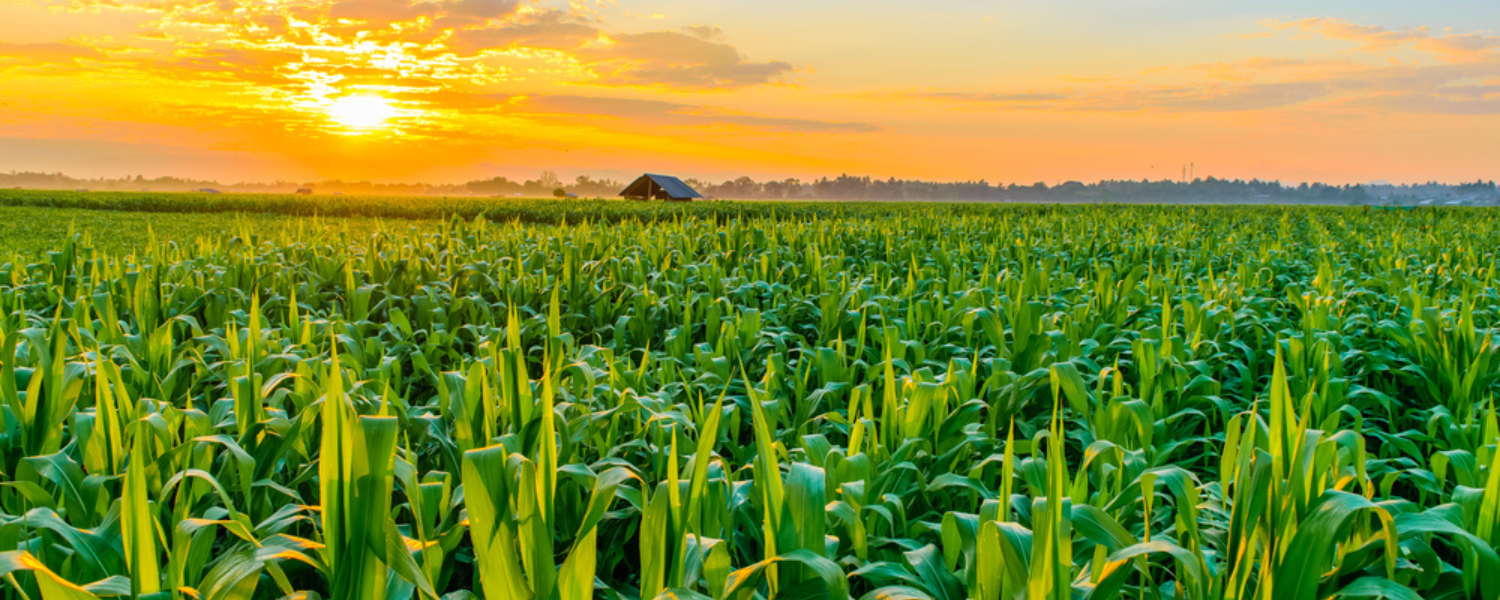
Review: How To Grow Corn
Corn is a versatile and popular grain that can be used in a variety of dishes. While it is most commonly associated with Mexican cuisine, it is also a staple in many other cultures around the world. Growing corn is relatively simple, and with a little care and attention, you can produce a bountiful crop.
Corn is a warm-weather crop, so it is best to plant the seeds after the last frost has passed. The soil should be loose and well-drained, as corn roots do not tolerate standing water. It is also important to ensure that the soil is fertile, as this will help the plants to grow strong and produce plenty of ears of corn.
Once the seeds have been planted, they should be kept moist until they germinate. Once the seedlings have emerged, they should be thinned out so that they are spaced about a foot apart. Corn plants require a lot of water, so it is important to make sure that they are watered regularly during dry periods.
If all goes well, you should start to see ears of corn developing within about two months. After another month or so, the ears will be fully developed and ready to harvest. With a little patience and care, you can enjoy fresh corn on the cob straight from your own garden.

